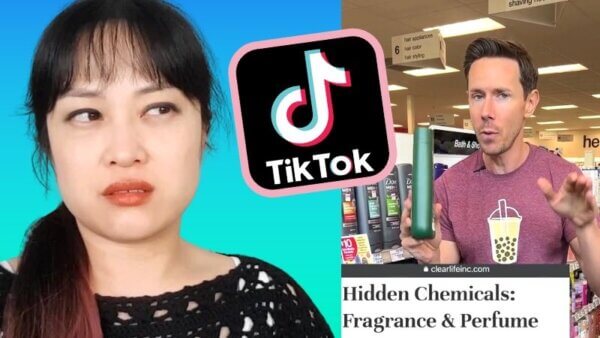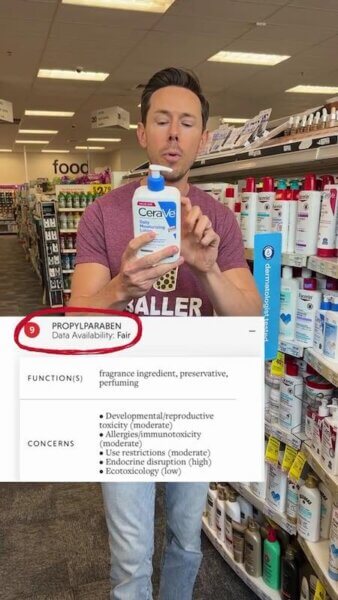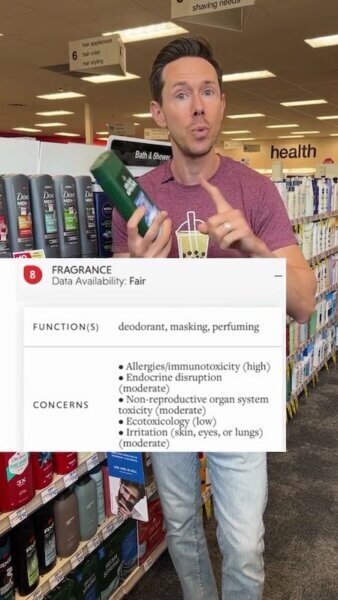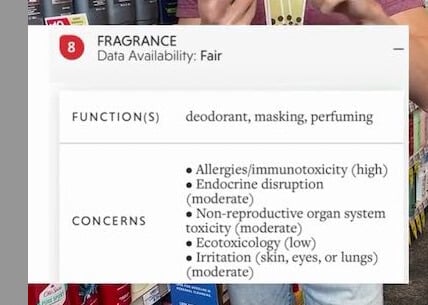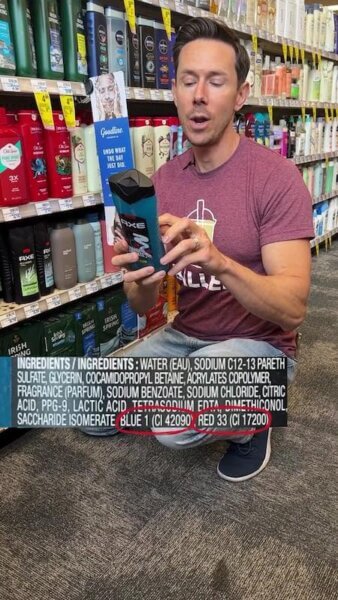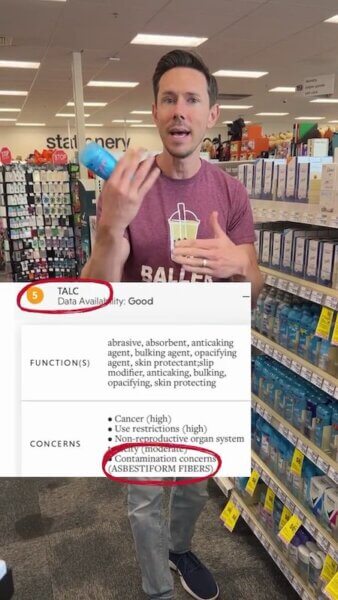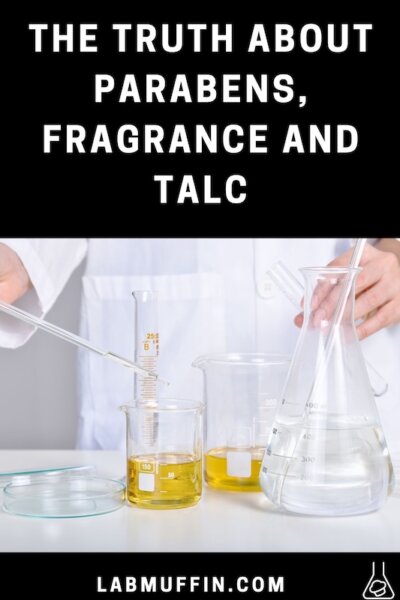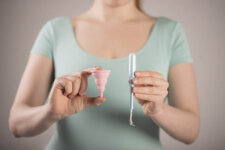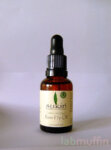Bobby Parrish, a home cook and food influencer who goes by the name FlavCity, has made a number of viral TikTok videos recently about dangerous personal care ingredients. As you might expect, there’s quite a lot of misinformation in them.
I debunked a couple of them in a recent YouTube video, along with some other TikTok videos – you can watch it here. Keep scrolling for the text version…
Parabens
Here’s what his video says about parabens:
Bobby: “Have you seen the ingredients in personal care products? They’re scary.
Any time you see the word paraben, put it back, especially propylparaben. These are preservatives that prevent mould from growing in here, but they’re hormone disruptors, endocrine disruptors.
They mimic estrogen in your body, and for the ladies out there, they find more of that in your body because it’s in your lotions, potions, and makeup.”
I discussed the propylparaben and endocrine disruption issue in Part 1.
Related post: Propylparaben in CeraVe: Debunking TikTok misinformation
The Environmental Working Group
The source he’s using for his videos is the EWG Skin Deep database.
There’s a trend of “clean eating” influencers starting to talk about toxic ingredients in personal care products. I think this is because apps that usually look at food (EWG, Yuka) also have a personal care section.
It’s really easy to make scary content that goes viral using these apps. All you have to do is scan the product and read out what comes up on your phone.
Unfortunately, this approach is absolute garbage. Any app that judges the safety of products based on just the ingredients list, which has no information on concentration, is pseudoscience.
The amount of a substance is really important in safety. The more molecules of something you’re exposed to, the more chances it has to interact with the harm-inducing target in your body, whatever it is for that specific substance. That’s why you might have heard the phrase “the dose makes the poison” from toxicologists.
Related post: Clean Beauty Is Wrong and Won’t Give Us Safer Products
The EWG specifically has a long history of capitalizing on fear. For example, they used to promote the idea that vaccines cause autism, which was based off a study that essentially hinged on parents’ memories and fraud.
Even though the study was partially retracted in 2004 and fully retracted in 2010, there was misinformation on mercury in vaccines causing autism on the EWG website until 2013.
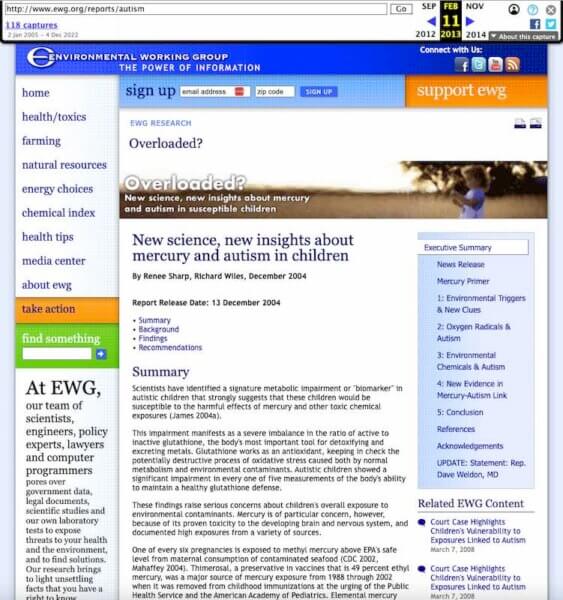
There are a lot of articles that explain why the EWG is bad. It’s mostly about how they approach food safety, , but they use the same principles for evaluating cosmetic ingredients.
A survey done by the Society of Toxicology asked 937 members what they thought about particular concepts. 92% of their respondents disagreed with the idea that “any level of exposure is unacceptable for chemicals that have been identified as carcinogens, mutagens, or reproductive toxicants”, which is pretty much the methodology that the EWG uses: if it’s in the ingredient list, it’s bad. 79% of respondents also believed the EWG overstates health risks.
There’s also this article that looked at the EWG’s “Dirty Dozen” list, which contains foods that tend to have the most (number, not concentration) pesticide residues. There are some really good quotes from the article, but the best one is probably:
“The methodology used to create the “Dirty Dozen” list does not appear to follow any established scientific procedures.”
…which is pretty much the same situation for the Skin Deep database.
Bobby also mentions that parabens are found more often in women’s bodies. While this sounds scary, what matters is the effect that they have, not their mere presence (the Society of Toxicology survey also recorded 81% of respondents rejecting the notion that the detection of any level of a chemical in your body indicates a significant health risk).
Fragrance
He then moves onto fragrance:
Bobby: “Pick up almost any product here: fragrance. Shaving cream, fragrance and body wash with parfum or fragrance. That’s the key word. If you see that, put it back because that’s the cosmetics version of “natural flavors.”
But there can be up to 3,000 synthetic fragrances or perfumes in there. They’re proprietary. They ain’t got to tell you anything, and they’re linked to reproductive issues. They find these fragrances in breast milk. It’s scary stuff. You don’t want it.”
Fragrances in breast milk?
As discussed for parabens, finding stuff in your body is not immediately “scary”. Scientists are getting increasingly good at measuring tiny amounts of substances, so even with lower exposures, we can expect to find more and more substances in bodily fluids.
Not knowing fragrance components
There’s a lot of fearmongering online about how not knowing all the individual components of fragrances is scary.
There’s a pretty obvious reason they don’t tell you: fragrances are trade secrets, just like the 11 secret herbs and spices, or the Coca-Cola recipe.
There’s a lot of consumer research showing that the first thing people do when they try a product is smell it.
Smell is associated with a lot of memories and strong emotional responses. That’s why it’s in so many products, and it’s so secretive. It’s a large part of what makes people want to buy products.
For fragrance, there’s an organization called the International Fragrance Association (IFRA). It’s for fragrance producers, and there are rules that their members have to follow – their members produce 80% of the global volume of fragrance.
Their rules are based on safety assessments by scientists at the Research Institute of Fragrance Materials (RIFM). Their assessments of fragrance safety are published in peer-reviewed journals. There’s also a separate independent panel that reviews what they do, including how they design their experiments.
These IFRA standards are really widely recognized in the industry, as well as by governments and regulators. For example, you can use an IFRA compliance certificate as part of your safety dossier when registering a cosmetic product in the EU. There are even regulations in some countries that specifically refer to the IFRA standards.
Essentially, if you’re buying a product that’s from a reputable brand, it should comply with the IFRA standards, and you can probably ask them if they are.
Alright – let’s say Bobby isn’t happy with that. He wants to see the full ingredient list.
What is he going to do with it?
I mean, I wouldn’t know what to do with it. Again, there aren’t any concentrations in an ingredient list, so determining risk is impossible and any attempt would be pseudoscientific.
If there were concentrations, then I’d probably take it to a toxicologist who’s familiar with cosmetics. They would probably just tell me to check the concentrations against whatever IFRA/RIFM recommend, because they’re the people who know the most about fragrance toxicology and conduct all the research. So we would just end up at the same place.
Synthetic vs natural fragrance?
He also emphasises how the fragrance could contain synthetic chemicals, implying that synthetic substances are inherently scary.
This happens a lot when it comes to cosmetic fearmongering. We humans have this bias towards assuming that natural things are just safer and better. It’s called the “appeal to nature” fallacy, but if you think about it for a bit, it’s obviously just not true.
Related post: Are Natural Beauty Products Better?
Nature is constantly trying to kill us. I am from Australia – I know this very well!
The most toxic substances known are natural. Even the most toxic substance known can be safely used – it’s botulinum toxin (botox).
And this natural bias is especially silly for fragrance, because it’s really well established that natural fragrances are full of allergens – the first and only “high” concern with fragrance listed in the EWG Skin Deep excerpt he shows in the video:
There are a bunch of allergens that have to be to listed out separately in an ingredients list above a certain concentration in some regions, like the EU and Australia. Most of these are things you find in natural essential oils – it’s rare to look at the ingredient list for a naturally fragranced product and not see words like linalool and geraniol.
Maybe he doesn’t know this because he’s in the US where this isn’t standard practice (yes, I do think this is something that the US should start doing).
And this EWG entry is generalizing over 3,000 different chemicals. These effects probably come from a small fraction of the 3,000 – it’s possible that none of these effects have ever been observed for the components of the fragrance in your particular product.
And if they are, and you’re buying from a responsible brand, then they’re going to be at an amount that the evidence indicates is safe.
Plus, a lot of essential oils have been observed to have these effects as well. It’s the same situation as for fragrance – these effects don’t happen at the small amounts used, if the maker is being responsible (there are limits on essential oils set by IFRA as well).
I do sometimes worry that some “natural” brands are just assuming essential oils are inherently safe, and dumping essential oils into their products without checking safety recommendations. Realistically, this would pose a much bigger problem than fragrances put in products by big brands who are well aware of IFRA standards.
And yes, one solution would be to avoid all fragranced products, just in case. But it does mean that you could be unnecessarily restricting yourself.
Colorants
The next concern he has is with coloring agents:
Bobby: “How do you think they get this blue color in the body wash?
Well, it’s with Blue 1 and Red 33 artificial coloring.
But those are almost always derived from tar or petroleum – loaded with toxins.
And many of these colorants are banned in other countries but not here.”
This is really silly – more so than usual.
Derived from tar or petroleum
Just because something comes from something scary doesn’t mean it’s loaded with toxins. During the derivitisation process, the toxins are removed.
It’s particularly ironic because he’s been groping a bunch of plastic bottles throughout the video without a second thought – plastic is overwhelmingly derived from petroleum.
Colorants in the US
On top of this, the US is particularly strict with colorants – stricter than pretty much anywhere else.
In the US, the FDA actually certifies each batch of colorants. Some excerpts from the FAQs on their website:
“FDA determines the need for batch certification based on whether the color additive needs this level of control to protect the public health. Some color additives, in their uncertified forms, might contain impurities at levels that pose a health concern.
Color additives subject to certification are typically synthetic, made from raw materials obtained from petroleum.”
So the FDA is particularly strict about these supposed toxins that he’s worried about.
Here’s their account of the certification process:
“When we receive a batch sample, FDA personnel evaluate its physical appearance and chemically analyze it for purity (total color content), moisture, residual salts, unreacted intermediates, colored impurities other than the main color (called subsidiary colors), any other specified impurities, and the heavy metals lead, arsenic, and mercury.
…
If the sample doesn’t meet the requirements, we reject the batch.
…
Note: FDA certifies color additives before they are used in products. We cannot certify color additives that are already in a product.”
It’s illegal to use coloring agents that haven’t been certified – a higher level of control than in other countries.
Talc and Asbestos
Bobby: “pH balanced for a woman but strong enough for a man – but also with talc.
You don’t want talc because talc and asbestos go hand in hand, which is why baby powder isn’t made with talc anymore. Because you can’t get rid of the asbestos.
You gotta put it back, even though it’s pH balanced, for me and you.”
I’ve talked about talc and asbestos before.
In short, from the evidence so far, it’s not as big of a problem as it’s been made out to be.
Related post: Talc and Asbestos in Makeup: Not So Pretty Episode 1
You can actually see in his video that the EWG only rates it as a 5 (moderate hazard):
I’m actually kind of surprised by this rating. It could be that there are a lot of organic brands who use it – there have been instances in the past where the EWG (allegedly) will jiggle their ratings for their partners (allegedly). Their partners pay a fee to be listed nicely in their database (allegedly).
One thing I will say for Bobby is that his shirts are great.
Bobby mostly makes food content – @foodsciencebabe (a food scientist) has some great debunks of his food misinformation.
Part 3 – on sunscreen misinformation, which also features Bobby – will be up soon!
Check out Part 1 on parabens here, and the full video version here.
